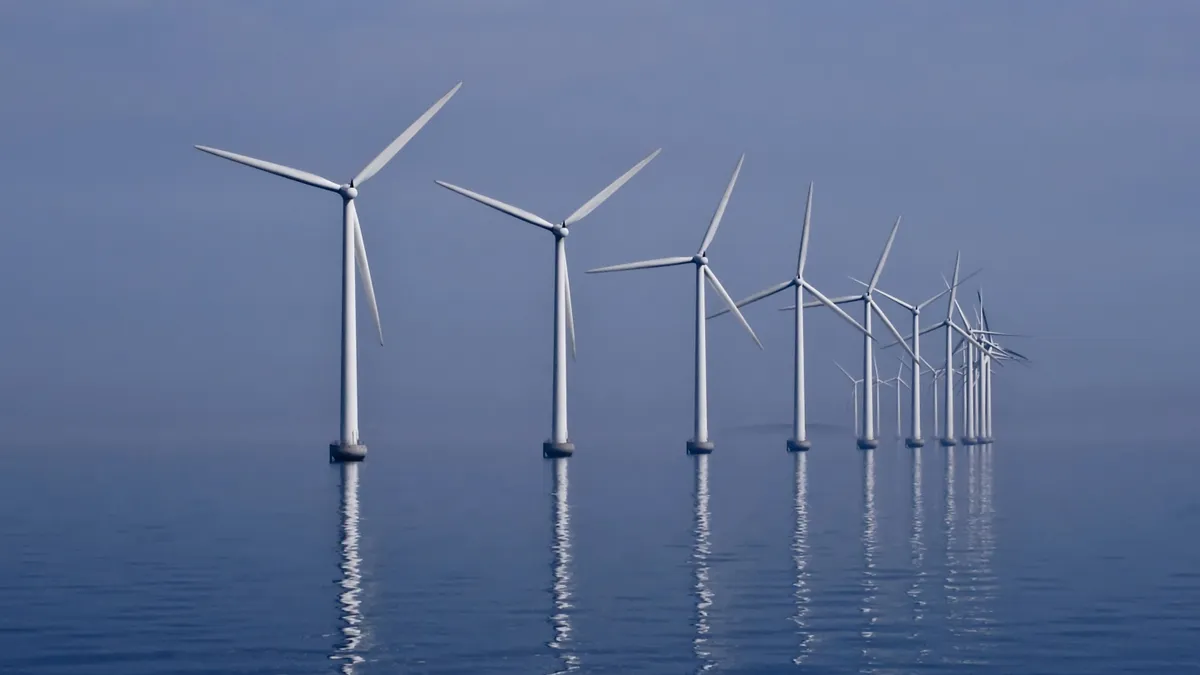Dive Brief:
- An Interior Department offshore wind lease auction for three blocks of acreage off the coast of Massachusetts brought in a record-shattering $405.1 million on Friday.
- Equinor Wind US, a subsidiary of the energy company formerly known as Statoil, held the previous record for a U.S. offshore wind lease, at nearly $42.5 million. From 11 bidders, Equinor, Vineyard Wind and Mayflower Energy, a joint venture of EDP Renewables and a Royal Dutch Shell subsidiary, pledged at least $135 million each to secure the separate leases.
- The Bureau of Ocean Energy Management (BOEM) now has a total of 15 active wind leases in federal waters for nearly two million acres. The most recent auctions, spanning almost 390,000 acres, have generated a majority of the $473 million of revenue brought in by the offshore wind lease sales, indicating a growing interest in U.S. offshore wind development.
Dive Insight:
Although the United States currently has only one operating offshore wind farm — Deepwater Wind's 30 MW Block Island Wind Farm in Rhode Island state waters — interest in the industry has come a long way. Three years ago, a federal auction for the same area off Martha's Vineyard leased last week failed to attract significant interest, according to the New York Times.
The winning bids yielded more than $1,000 per acre, while the latest offshore drilling lease auction in the Gulf of Mexico held in August yielded about $222 per acre for over 800,000 acres.
The policies of Northeast states have been increasingly encouraging offshore wind development, as the states have been pursuing power purchase agreements (PPA) for hundreds of megawatts of the renewable resource to help power densely populated coastal cities.
The escalation in the site auctions for offshore wind had already taken people by surprise when a single site broke $40 million in 2016, according to Walter Musial, principal engineer and manager of the National Renewable Energy Laboratory's offshore wind program.
"If you count just the states that are in reach of [the leasing areas], you know, Massachusetts and New York, I think there's enough development potential to cover that, so it goes a long way to giving [developers] additional confidence to gain a PPA and develop the site with lower risk," Musial told Utility Dive.
The high bidding is "a proxy for how exuberant the industry's feeling right now, and how bullish they're feeling about the prospects for offshore wind," Musial told Utility Dive.
Technological advancement also figures into the high bids as developers see offshore wind costs going down, according to Erin Baker, industrial engineering professor at the University of Massachusetts offshore wind energy program.
"So to them, developing [offshore wind projects] is more profitable, therefore they're willing to pay more for them," Baker told Utility Dive of developers.
Leasing is only the first step of an extensive process to permit offshore wind turbines. Permitting still presents a large barrier to developers, Baker said.
According to BOEM, the three leases will be officially awarded after the Department of Justice and the Federal Trade Commission conducts a standard anti-competitiveness review of the auction. Pending that and the federal collection of the winning bids, lessees will have a one-year period to submit a site assessment plan followed by a four-year period to submit a development plan for BOEM approval. Before the 33-year lease term can begin, a federal environmental review will take place, triggered by the submission of the development plan, known as a Construction and Operations Plan.
Massachusetts and Rhode Island senators asked BOEM last Friday to include stakeholders like fishermen earlier in the permitting process, to minimize the impacts of planning and more effectively improve communications with the fishing industry and offshore wind developers.














